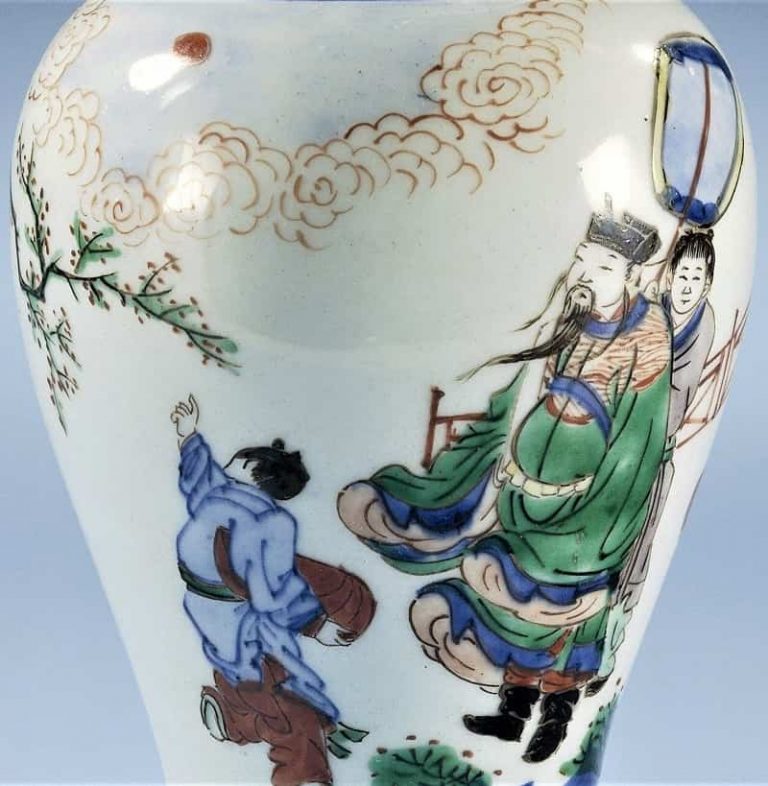Editor: Pictorial artworks with figural scenes in traditional China often have historical and cultural significance and are not to be mistaken for daily life genre painting. Here is an example and Dr Yibin Ni will explain to you the hidden meaning in the scene of Seasoning the Stew with Sour Prunes.
featured image above: famille verte dish, Kangxi period (1662–1722), Qing dynasty, courtesy of The Trustees of the British Museum

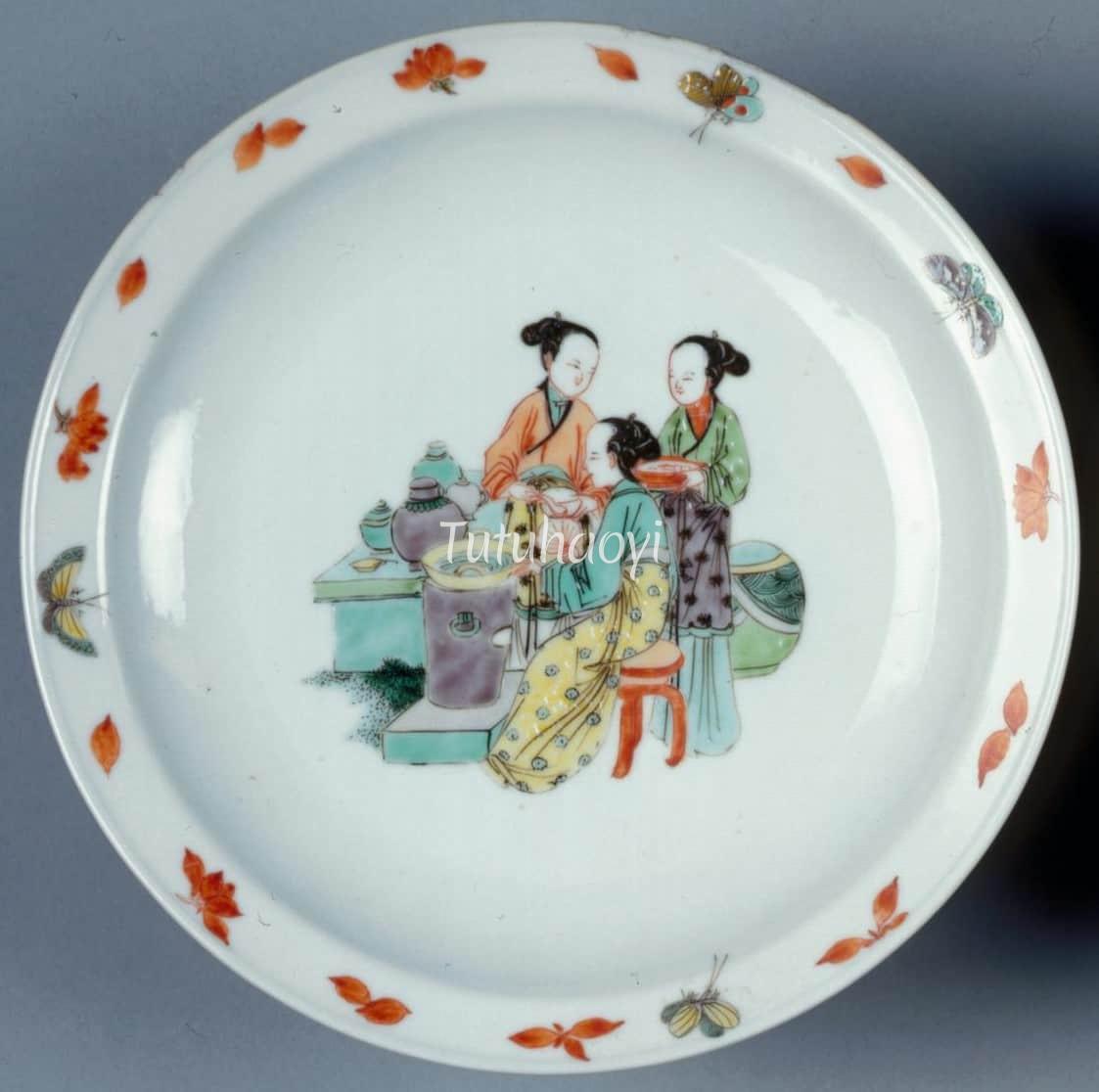
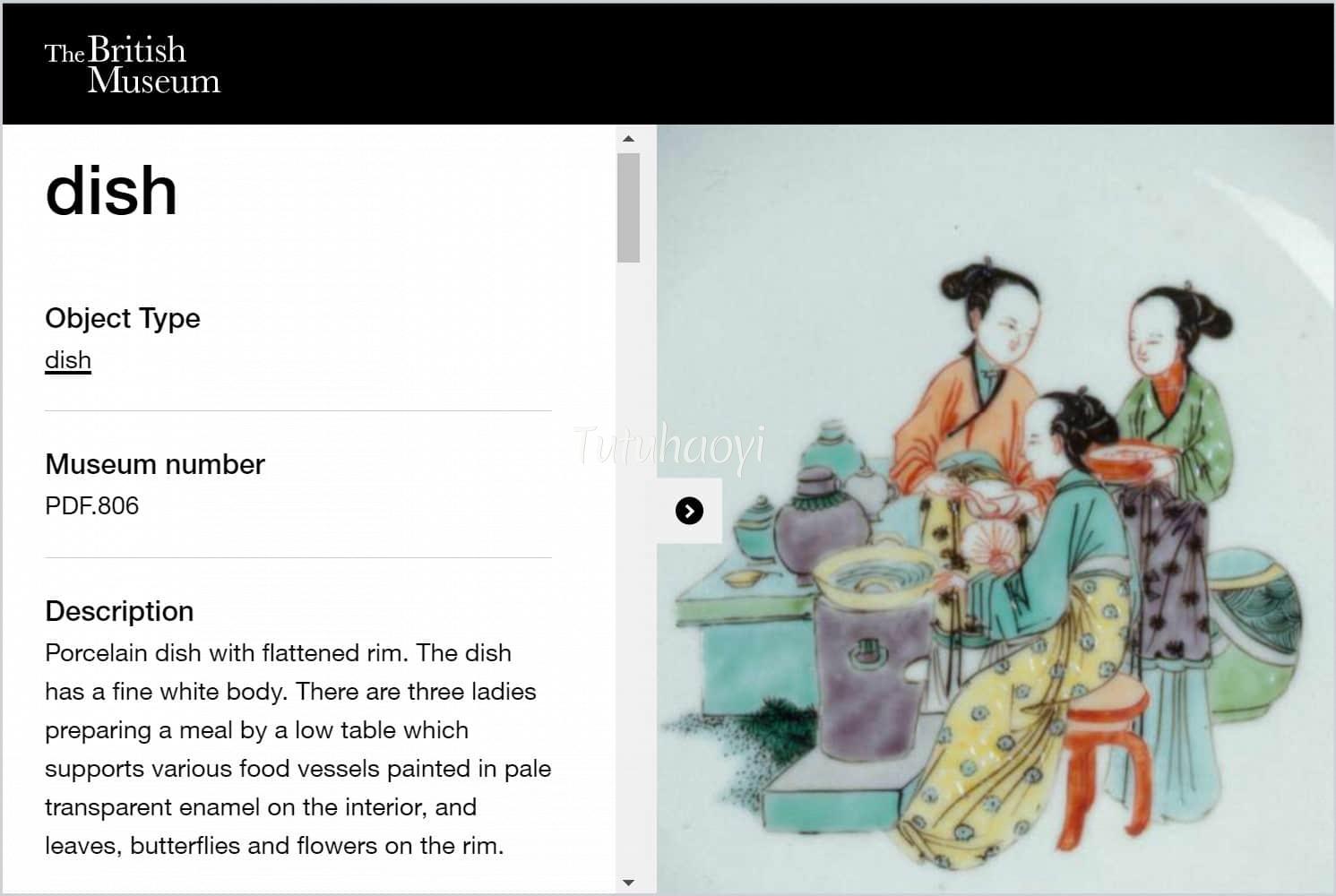
In the collection of the British Museum, there are two famille verte dishes (PDF805 and 806) with the same scene. Using PDF 806 for example, we can see that there are three well-dressed young ladies gathering around a stove with a cauldron on it. There is a stone table on the left, on which stand several lidded jars of various sizes. They are storage jars for cooking ingredients. On the right, there is a round porcelain stool and on its seat is fitted a padded silk cover. The lady with a green top and a yellow embroidered skirt is sitting on a red wooden stool attending the stove with a palm-leaf fan in her right hand. The lady standing on the right is holding a tray with some round objects in it. The lady on the left in a red top has a bowl with a spoon in her hands, ready to taste the content in the cauldron. The museum online catalogue describes the scene as ‘three ladies preparing a meal by a low table’. Obviously, to an uninitiated viewer, the scene appears to be a sketch of everyday life.
Sure enough, the online catalogue of the Metropolitan Museum of Art, New York, gives a similar Kangxi dish painted with overglaze polychrome enamels the title ‘Plate with women cooking’.


In the entrance hall of Corsham Court, Corsham, Wiltshire, UK, a 79cm tall blue-and-white lidded jar of the Kangxi period (1662–1722) is conspicuously on display. In the porcelain painting, a woman is sitting in front of a stove with a cauldron on it and is poking the hearth with a fire stick. Another woman standing on the left is stirring the content in the cauldron with a long stick. A third woman is behind the first woman holding a container in her hands. Apparently, it depicts the same subject matter as that on the two PDF dishes in the British Museum.
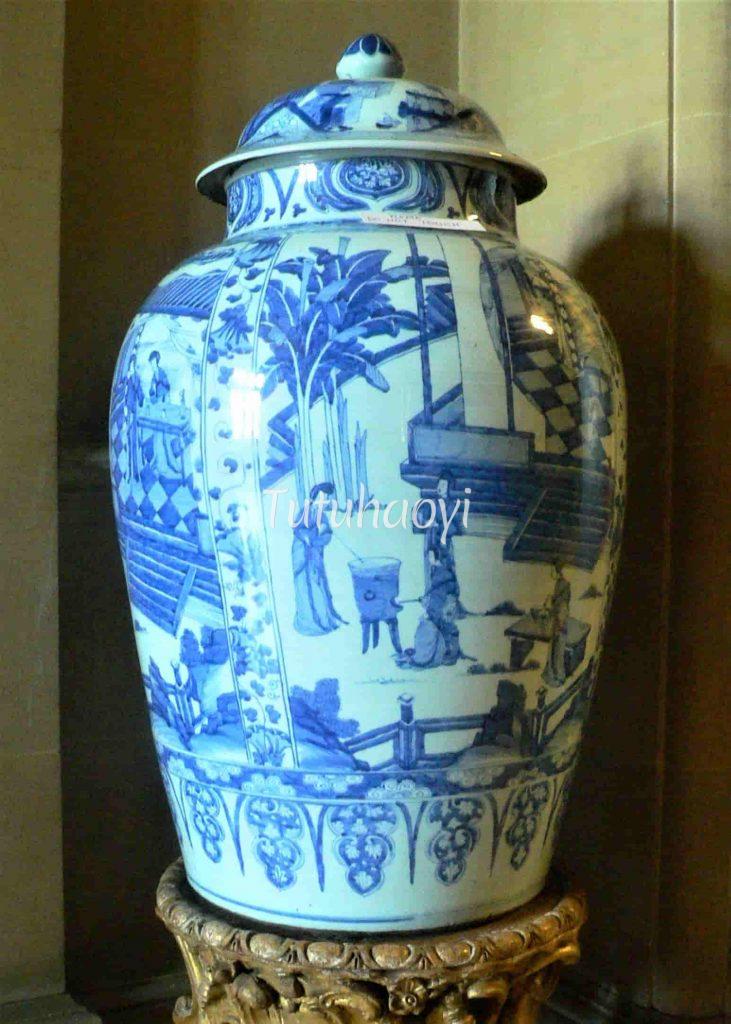

In the Royal Collection, UK, there is a Kangxi blue-and-white jardinière with a panel of the same scene on it. The late John Ayers says that these scenes ‘depict[ing] women in rooms with steps to an adjoining terrace (possibly illustrating ‘The Romance of the Western Chamber’ by Wang Shifu of the Yuan dynasty (1271–1368))’ in his book Chinese and Japanese Works of Art in the Collection of Her Majesty The Queen, 2016.
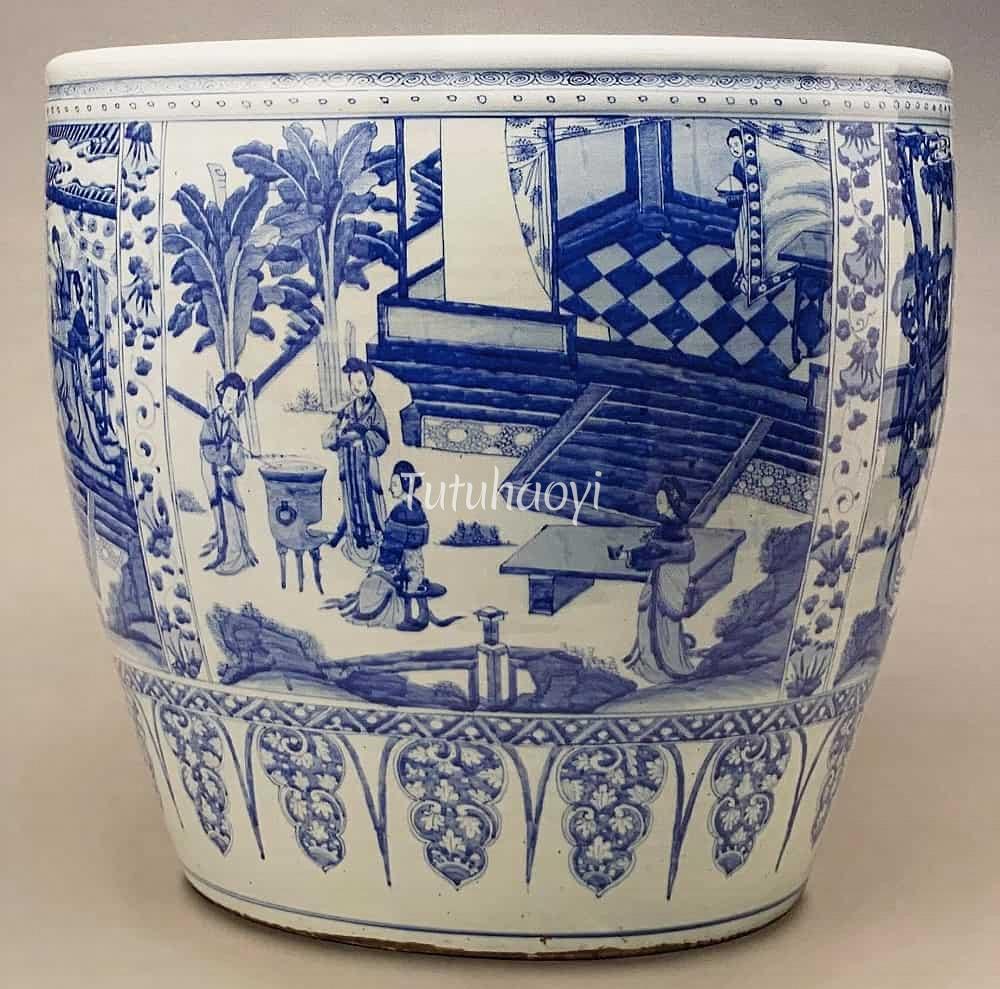

Why do we repeatedly find the same ‘cooking-meal’ scene on traditional Chinese decorative arts? A hanging scroll painting by the well-known late-Ming painter Chen Hongshou (陈洪绶, 1598–1652) in the collection of Guangdong Provincial Museum sheds some light to the mystery. The painting has a clear title: 调梅图 Tiaomei Tu, which can be translated as ‘Picture of Seasoning the Stew with Sour Prunes’. It is clear that the painting bears the same scene of three ladies around a stove, on which a cauldron of food is being cooked. This time, one lady of a higher status is sitting against a garden rock watching, with an embroidered gauze fan in her left hand, while two lower-ranking women bending over the cauldron. One holds a tray with some ingredients in it and the other is stirring the content in the cauldron with a pair of chopsticks. What is the significance of ‘seasoning the stew with sour prunes’, then?

As a matter of fact, the 17th-century master Chen Hongshou alludes to a significant classic metaphor in politics and governance with his painting. The metaphor likens the art of governance to the adequate seasoning of a stew with salt and sour prunes. In the Commentary of Zuo (左传 Zuo Zhuan), one of the oldest Chinese history books, written during the 4th century BCE, there is a famous passage in which the right method of preparing a perfectly seasoned stew is linked to the proper way of maintaining a harmonious relationship between the lord and his vassal. The statesman Yan Ying (晏婴 578–500 BCE) says to the Duke Jing of Qi (齐景公 Qi Jinggong, r. 547–490 BCE): ‘The cook blends the ingredients and balances them according to the right taste, adding whatever is lacking and negating whatever is excessive (宰夫和之,齐之以味;济其不及,以泄其过).’ From then on, the phrase 和羹 hegeng, ‘seasoning the stew’, or 调梅 tiaomei, ‘seasoning the stew with sour prunes’, or 调鼎 tiaoding, ‘seasoning the food in the cauldron’, has been widely used to refer to the business of ‘governing the country’, or, specifically, ‘serving as the prime minister to the emperor’.
The Veritable Records of the Qing (清实录 Qing Shilu) has noted down that the Yongzheng emperor (r. 1723–35) bestowed a plaque to Zhang Tingyu (张廷玉, 1672–1755), his most trusted privy council member, in 1729. The grand cinnabar plaque bore the four Chinese characters 调梅良弼 Tiaomei Liangbi, which can be translated as ‘Fine Lieutenant Who Can Season with Prunes’. Together with the plaque to be hung in the prominent position on the wall in the front hall, Zhang Tingyu was given a bronze seal in the shape of a tiger that bore the same set phrase as well.
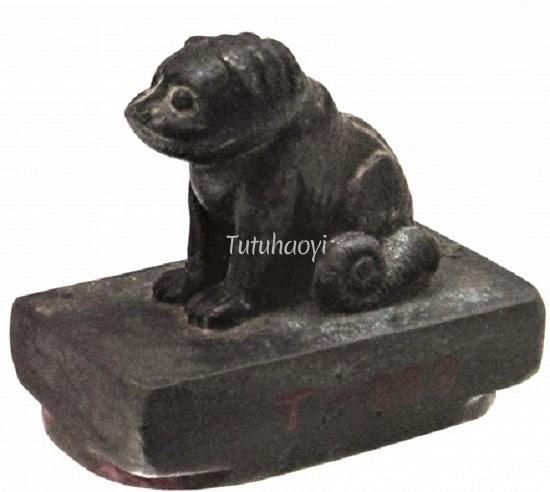
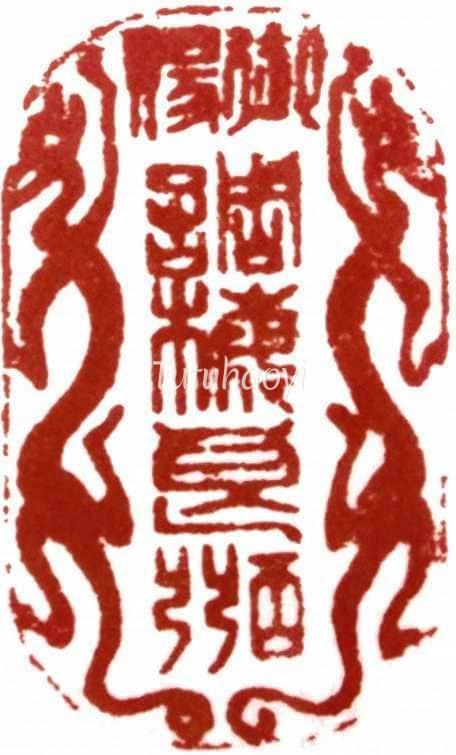
Various versions of the image of this metaphor were created to be used as auspicious gifts or self-promotion decorations, such as paintings, display porcelain, and ink cakes. Sometimes, the artist would emphasise the pickled sour prunes in the container held by one of the assistants in the scene as distinguishable round objects. Just as the images of the Four Arts (四艺 siyi), i.e. plucking the qin zither, playing the go chess, and writing and appreciating calligraphy and painting (琴棋书画 qin qi shu hua), have both male and female versions, so have the images of ‘Seasoning a Stew with Sour Prunes’, albeit the female versions flourishing a bit later.
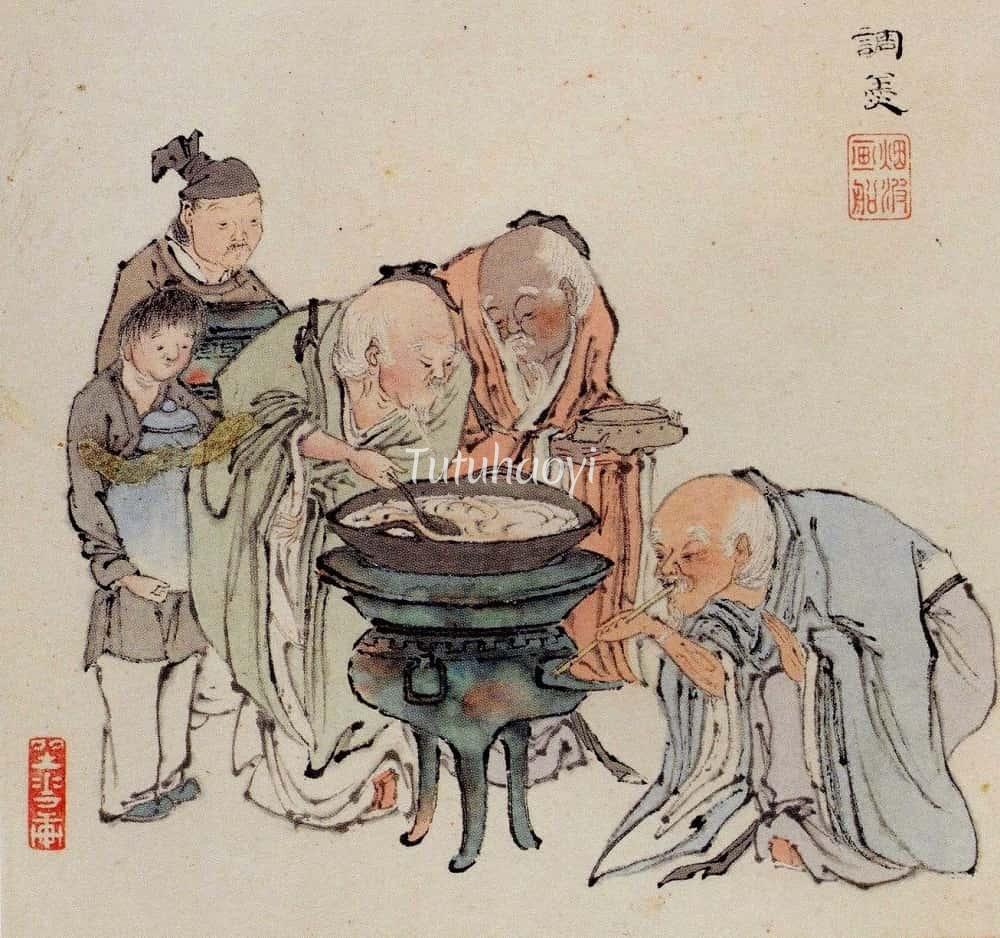

The findings and opinions in this research article are written by Dr Yibin Ni.







